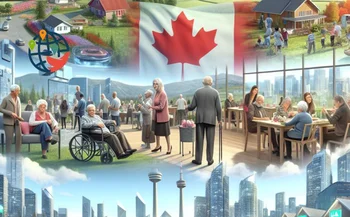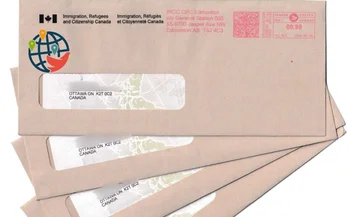Claiming Refugee Status (Asylum) in Canada

If you fear persecution or face personal risk in your home country, you can apply for asylum in Canada.
People who cannot stay in their home country due to danger may be eligible for refugee status in Canada. According to official UN data, Canada has accepted over 1 million asylum seekers since 1980.
Who are refugees
The Canadian government defines refugees on its official website as people who:
- are fleeing their home countries due to a well-founded fear of persecution;
- are unable to return home;
- have witnessed or experienced many horrors.
A refugee differs from an immigrant in that an immigrant voluntarily decides to settle in another country, while a refugee is forced to do so.
According to Canada's immigration plan for 2024-2026, the government aims to accept 76,115 refugees in 2024. As of early 2024, over 46,000 asylum applications have already been received. Quebec has its own immigration system, separate from other Canadian regions, and sets its own targets for newcomers. In 2024, Quebec plans to accept 7,200 refugees.
Main refugee programs
The Canadian refugee system has two main programs:
- Refugee and Humanitarian Resettlement Program (for people outside Canada who need protection);
- In-Canada Asylum Program (for people already in Canada).
The Refugee and Humanitarian Resettlement Program is for people who already have recognized refugee status and typically live in refugee camps. You can't apply for this program on your own, the UN Refugee Agency, along with private sponsors, selects candidates for resettlement in Canada. After that, it takes some time to process refugee cases.
Refugees undergo security checks and medical examinations before being approved for resettlement in Canada. They then receive an entry visa and permanent resident status immediately upon arrival in Canada.
The In-Canada Asylum Program is for people who are already in Canada or have just entered the country and cannot return home due to a well-founded fear of persecution or risk of torture or punishment in their country.
You can apply for asylum in Canada at a port of entry (airport, seaport) or online. CBSA or IRCC officers will determine if a person can apply. Applicants for the In-Canada Asylum Program also undergo health and security checks.
Economic Mobility Pathway Pilot
The Economic Mobility Pathway Pilot combines refugee and economic immigration. It's designed for skilled professionals identified by the UN as refugees who meet the requirements of one of Canada's existing immigration programs.
Refugees have several benefits under the Economic Mobility Program:
- expedited application processing (up to 6 months);
- no government fees or charges for biometrics and medical exams;
- assistance with relocation costs to Canada if approved;
- help with adaptation in Canada.
There are two ways to apply for the Economic Mobility Pathway Pilot:
- through the Atlantic Immigration Program, one of the Provincial Nominee Programs, or the Rural and Northern Immigration Pilot;
- directly through the Economic Mobility Pathway Pilot if you meet the requirements:
- a full-time job offer in Canada plus at least 1 year of work experience at any time and a proven intermediate level of English or French;
- no job offer in Canada, but at least 1 year of work experience in the last 3 years in a skilled occupation and a proven advanced level of English or French.
Assistance for refugees
Refugees often need help settling in Canada. Canada provides financial support, usually for 1 year. They also receive some important services:
- loan for relocation to Canada;
- reception at the airport or other port of entry;
- temporary housing;
- help finding permanent housing;
- assistance with adapting to the new place of residence, opening a bank account, budget planning, registering for federal and provincial programs for Canadian residents;
- language training and skills in demand in Canada;
- written and oral translation;
- employment assistance.
Private sponsors can also provide these services and financial support. Their assistance usually lasts 1 year as well, but in some cases can be up to 3 years.
Who can apply for asylum
You can only apply for asylum if you have serious grounds, such as:
- you cannot return to your home country due to fear of persecution based on race, religion, political beliefs, nationality, or membership in a particular social group (discrimination based on gender, sexual orientation, gender identity, HIV status, etc.);
- you are a human rights defender who protects citizens' rights and freedoms and suffers from arbitrary actions of state structures and officials;
- if you return to your home country, you will personally be subjected to torture, threat to life, risk of cruel treatment or punishment, death penalty, systematic human rights violations, etc.
When applying for refugee status, you must provide strong evidence that you cannot return to your home country or country of permanent residence. Cases are reviewed by the Immigration and Refugee Board of Canada (IRB), an independent body that decides all immigration and refugee matters.
You may be denied asylum if you:
- were recognized as a refugee by another country to which you can return;
- have already received protected person status in Canada;
- arrived through the land border between Canada and the US;
- pose a threat to the safety of Canadian residents;
- have already applied for asylum in Canada and were refused;
- refused or withdrew a previous asylum application in Canada;
- do not have sufficiently strong grounds.
You also cannot apply for asylum if you are in the process of being deported from Canada.
We have described how to apply for asylum in Canada in a separate article.
Refugee status or immigration
Seeking refugee status is not an easy way to obtain permanent residence. It's a long and complex process that requires strong evidence that you truly qualify for refugee status, imposes several restrictions (such as a ban on leaving Canada while your case is being considered), and carries a high risk of rejection.
We recommend considering refugee status only as a last resort and, if possible, using regular Canadian immigration programs instead. We can help with this. Our specialists will find the most suitable way for you to move and assist with paperwork. Important: we do not handle refugee applications.





























